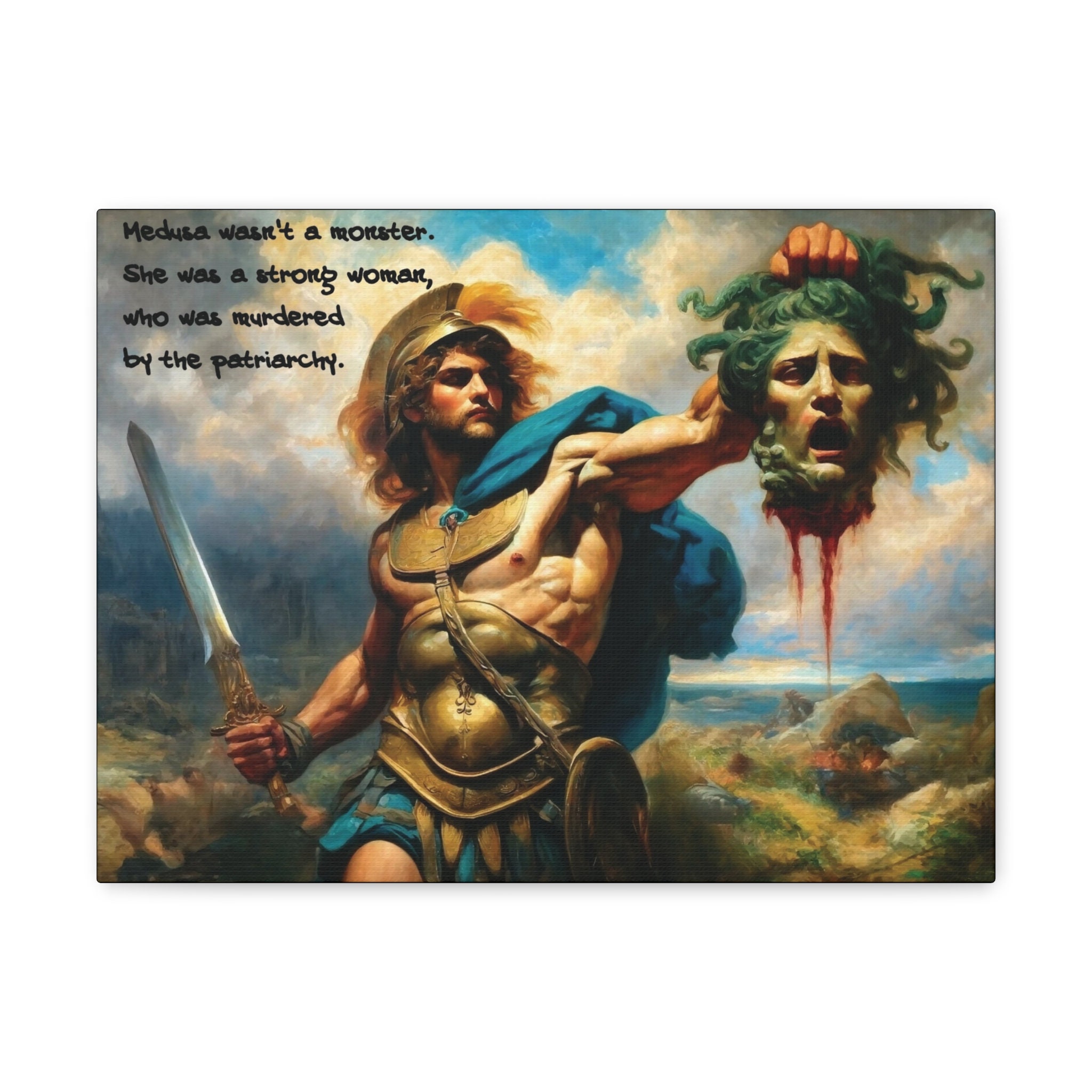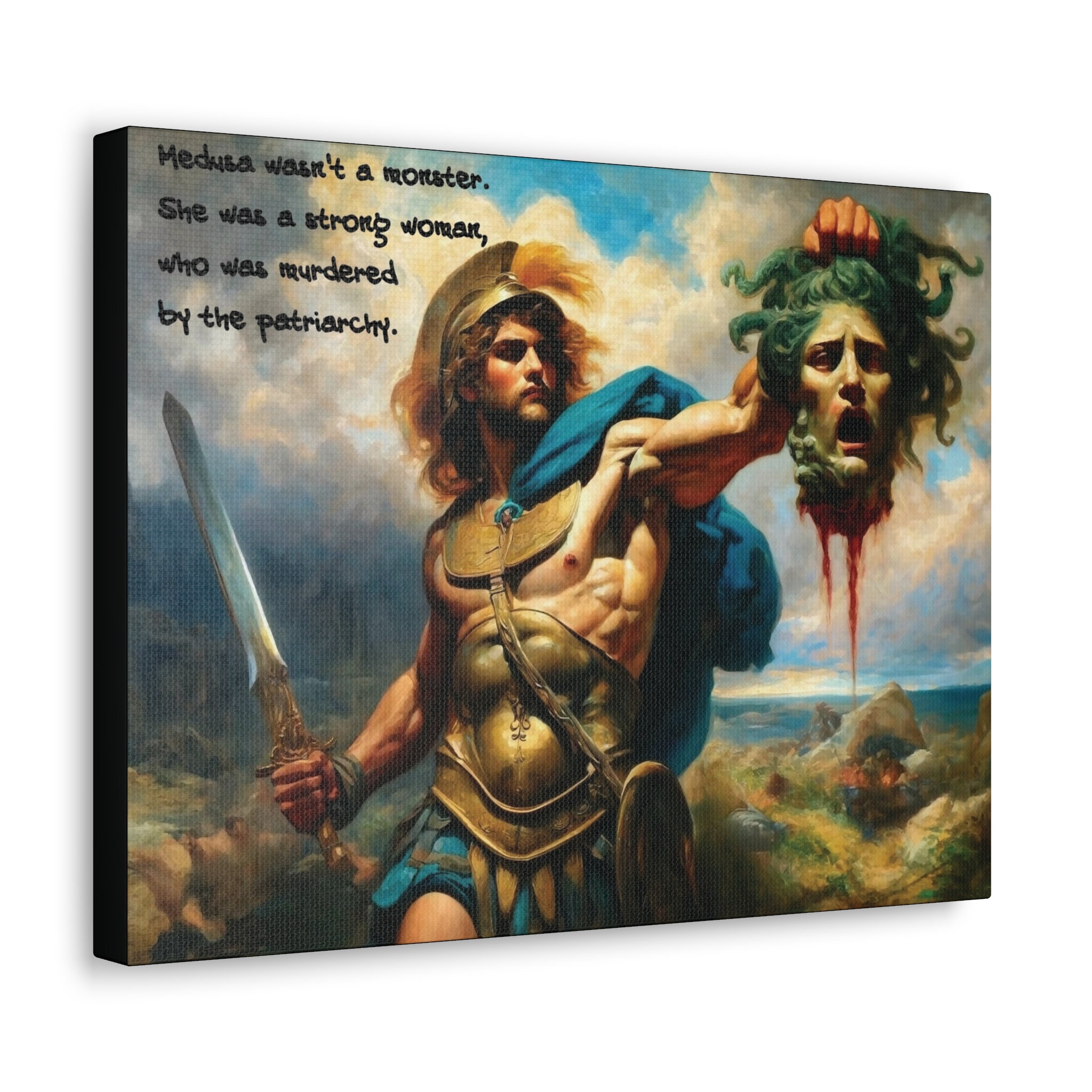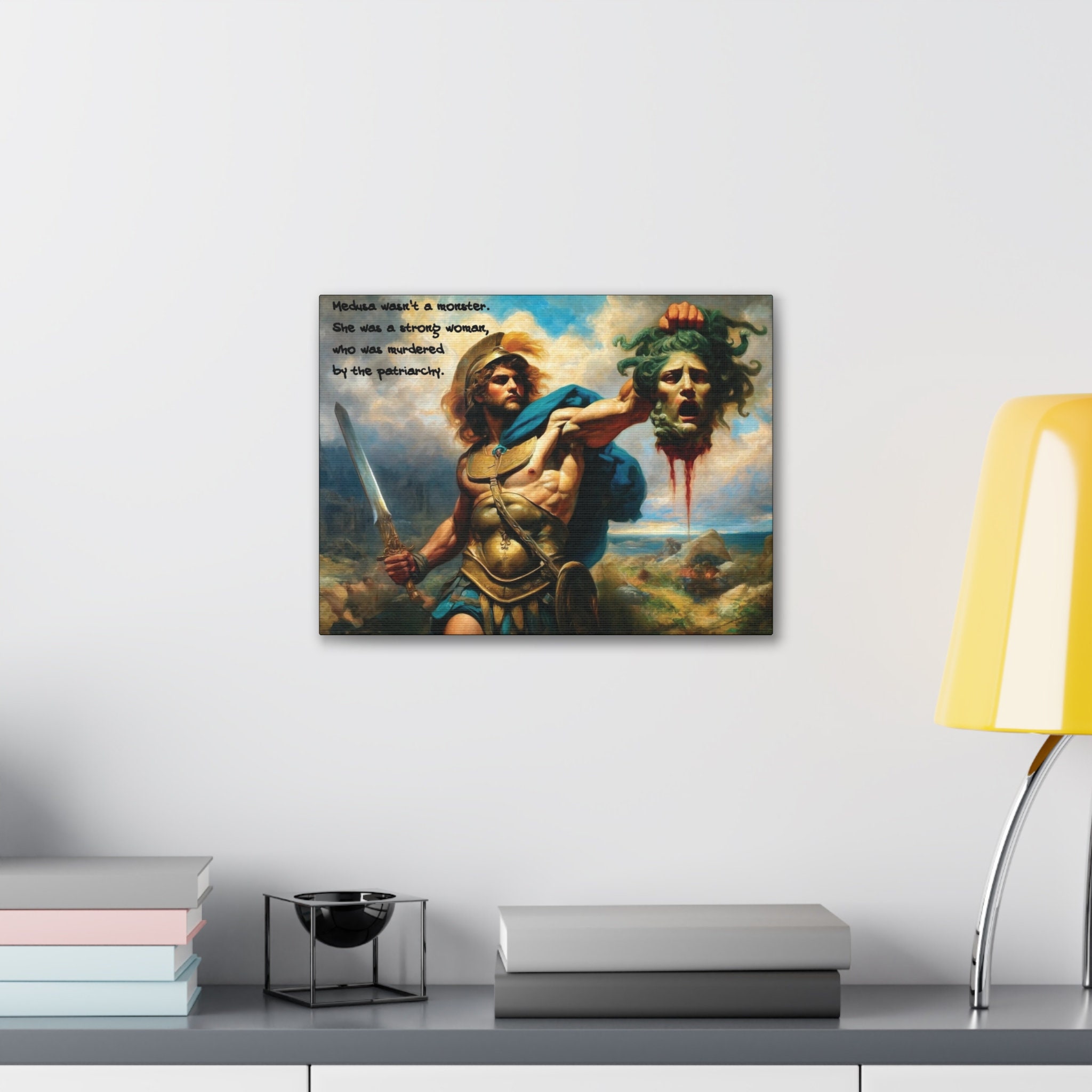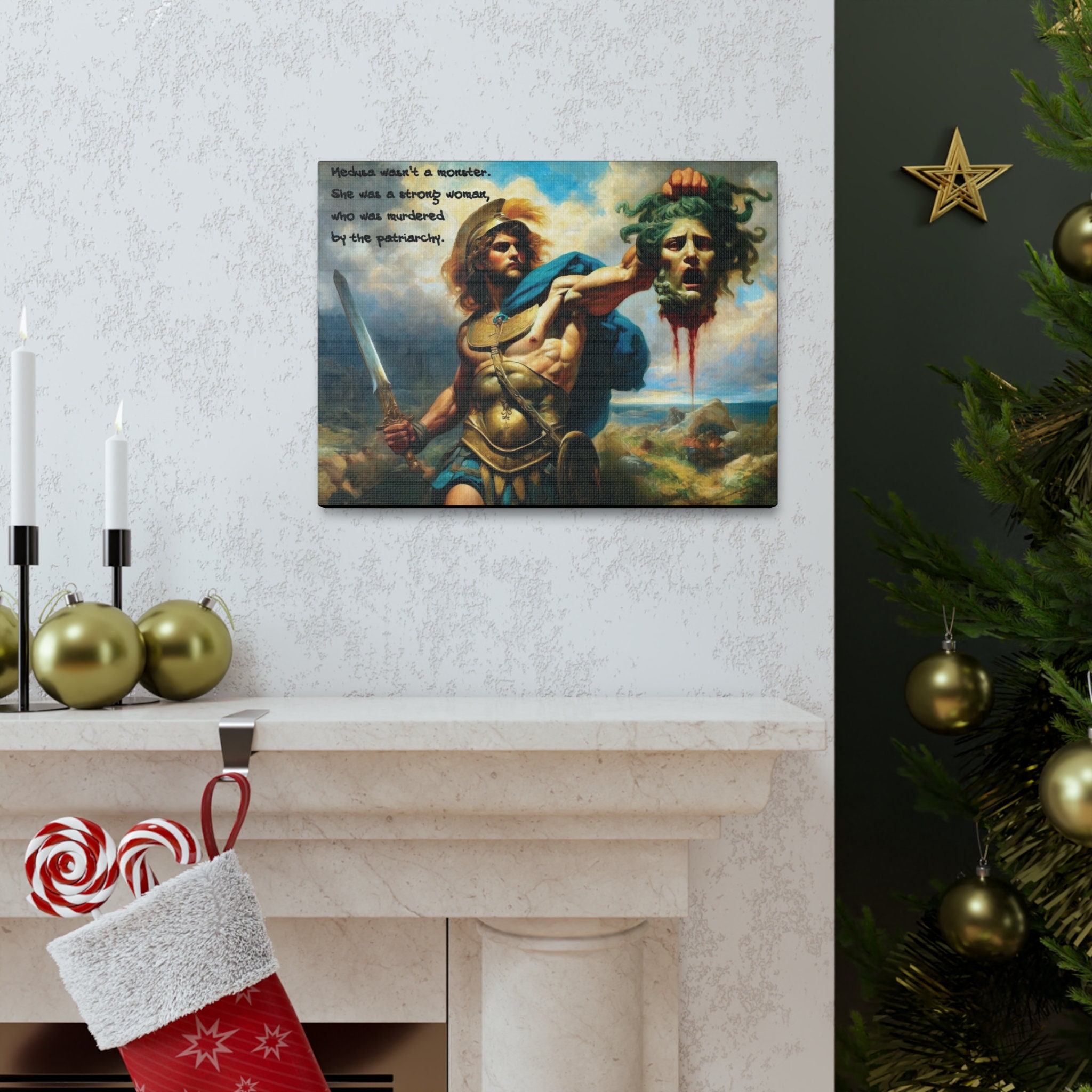Medusa was Murdered, 16"x12" Canvas Print, Feminism, Feminist, Greek mythology, Athena, Poseidon, Gorgon, Patriarchy, Misogyny
$67.00
Text on canvas: Medusa wasn't a monster. She was a strong woman, who was murdered by the patriarchy.
Background info:
Medusa, often depicted as a monstrous figure with serpents for hair, is a powerful symbol of how patriarchal narratives have historically demonized and victimized women. In ancient Greek mythology, Medusa was originally a beautiful maiden who was transformed into a Gorgon as punishment. The most popular version of her story involves the goddess Athena cursing Medusa after she was raped by Poseidon in Athena’s temple. This punishment, inflicted upon the victim rather than the perpetrator, exemplifies the ways in which patriarchal systems blame women for the violence enacted upon them.
Medusa's murder at the hands of Perseus further underscores her role as a victim of patriarchal violence. Armed with tools given by male gods and driven by the patriarchal quest for glory, Perseus decapitates Medusa while she is defenseless and asleep. Her death, rather than liberating or just, serves to reinforce the hero's status and power within a male-dominated society. Medusa’s head, with its ability to turn onlookers to stone, is then used as a weapon, symbolizing how women’s suffering and trauma are often co-opted and weaponized by patriarchal forces for their own ends. Medusa's story, from her unjust punishment to her brutal death, illustrates the deep-seated misogyny embedded in many cultural myths and the ongoing struggle to reclaim and reinterpret these narratives from a feminist perspective.
Additional info:
Many of the canvases in my shop are also available as high-quality posters, both framed and unframed. Please contact me for details.
A perfect addition to every room! This canvas is made from a finely textured artist-grade cotton substrate which consistently reproduces image details with outstanding clarity and detail.
Sizes:
• 16" wide x 12" high
Canvas specs:
• Material: Ultra smooth, 100% cotton rag canvas
• Material quality: Finely textured artist-grade cotton substrate
• Surface finish: Matte
• Cotton rag fabric weight: 400 GSM (11.80 oz/y²)
Wrapped canvas frame specs:
• Wrapped canvas frame thickness: 1.25"
• Framing quality: Beautifully finished, taut corners that give a clean and crisp look
• Hanging hardware: Attached
Ink specs:
• Canon 12-color Aqueous ink
• Acid free, archival quality
Shipping from United States
Processing time
1-7 business days
Customs and import taxes
Buyers are responsible for any customs and import taxes that may apply. I'm not responsible for delays due to customs.
Payment Options
Returns & Exchanges
I gladly accept returns and exchanges
Just contact me within: 14 days of delivery
Ship items back to me within: 30 days of delivery
I don't accept cancellations
But please contact me if you have any problems with your order.
The following items can't be returned or exchanged
Because of the nature of these items, unless they arrive damaged or defective, I can't accept returns for:
- Custom or personalized orders
- Perishable products (like food or flowers)
- Digital downloads
- Intimate items (for health/hygiene reasons)
Conditions of return
Buyers are responsible for return shipping costs. If the item is not returned in its original condition, the buyer is responsible for any loss in value.
Frequently Asked Questions
What is All-Over-Print (AOP)?
All-Over Print (AOP) is a printing method that uses dye-sublimation to print a design onto polyester. During the dye sublimation process the dye is absorbed into the fabric. Since, it is not printed on the surface, like most t-shirts, it provides for a fantastic soft-to-the-touch feel and superior breathability.
AOP is a more time consuming method than screen printing or direct-to-garment (DTG) printing, so the prices are higher and the production times are longer, but the results are most definitely worth it.
Advantages of AOP:
The design won't peel off, unlike typical screen printing.
The design is part of the fabric of the item, so it will last as long as the item does.
The intensity of color is often unmatched.
What is Giclée?
Giclée (pronounced zhee-CLAY or often gee-CLAY) is a printing process that creates a museum quality, archival print. Special acid-free, paper is printed with fade resistant ink using a state-of-the-art, large format inkjet printer.
What is a gallery wrap canvas?
Gallery wrap is a style of displaying a canvas that doesn't show any visible staples or nails holding the fabric to the wooden stretcher bars. This style of canvas is intended to be hung unframed.
What is a gallery mirror wrap canvas?
Mirrored edges (mirror wrap) is used to show the whole image on the main surface, rather than printing the edges of the image on the sides (image wrap) of the canvas frame. It is usually used when there is necessary detail on the edges of the image. Image wrap is used when the focal point of the image is in the center.





